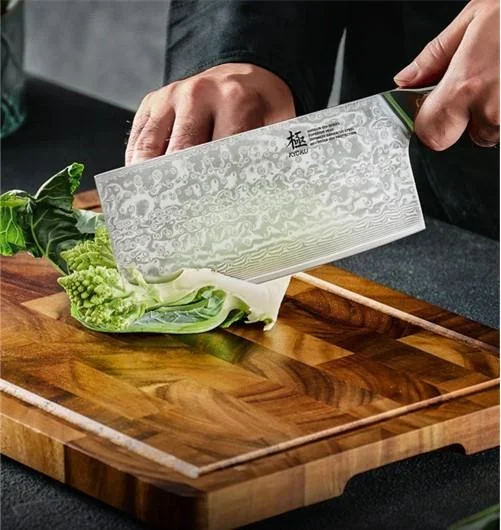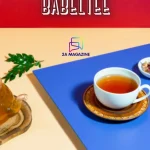Introduction
Japanese knives are renowned for their exceptional sharpness, precision, and craftsmanship. Crafted with a deep respect for detail, they are favored by both professional chefs and cooking enthusiasts for their ability to create clean cuts that enhance the quality of ingredients. At the heart of these knives’ performance lies the type of steel used, which determines the knife’s sharpness, edge retention, durability, and ease of maintenance. This article breaks down the most common steel types found in some of the best Japanese knives, explaining their properties, benefits, and potential drawbacks.
Key Characteristics of Knife Steel Types
Before diving into specific types of steel, it’s helpful to understand the key attributes that define the performance of knife steels:
- Hardness: Hardness is a measure of how well a knife can retain its sharp edge over time. Harder steels usually hold a sharp edge longer but may be more brittle.
- Corrosion Resistance: Corrosion resistance, mainly present in stainless steels, protects the blade from rust and staining. This is crucial for those who prioritize ease of maintenance.
- Sharpness and Ease of Sharpening: Certain steels can achieve sharper edges than others. Carbon steels, for instance, can reach incredible sharpness but need more frequent maintenance.
- Edge Retention and Durability: Edge retention indicates how well the knife holds its sharp edge during repeated use. Durable steels withstand regular cutting tasks without losing sharpness quickly.
These characteristics vary across steel types, impacting a knife’s suitability for different users and uses. Now, let’s explore each steel type in more detail.
Overview of Common Steel Types Used in Japanese Knives
Carbon Steel
Characteristics: Carbon steel is beloved by chefs for its exceptional sharpness and ease of sharpening. Carbon steel knives can achieve a razor-sharp edge, which is ideal for precision tasks. However, they are prone to rust and discoloration if not cared for properly. Regular cleaning, drying, and sometimes oiling is necessary to maintain a carbon steel blade’s quality.
Pros:
- Unmatched sharpness and ease of sharpening.
- Excellent edge retention with proper care.
Cons:
- Prone to rust and discoloration, requiring frequent maintenance.
- Can be brittle and may chip if used on hard surfaces.
Best For: Professional chefs and culinary enthusiasts willing to dedicate time to maintenance.
Stainless Steel
Characteristics: Stainless steel is favored for its corrosion resistance, making it much easier to care for than carbon steel. While stainless steel may not hold as fine an edge as carbon steel, it is suitable for general cooking tasks and requires minimal maintenance.
Pros:
- Highly resistant to rust and staining.
- Low maintenance and generally durable.
Cons:
- May not achieve or retain a razor-sharp edge like carbon steel.
- Typically harder to sharpen than carbon steels.
Best For: Home cooks and casual users who prefer low-maintenance knives.
High Carbon Stainless Steel
Characteristics: High carbon stainless steel combines the best of both worlds, offering the sharpness and hardness of carbon steel with some rust resistance of stainless steel. While it still requires more care than standard stainless steel, it offers a balanced option for those wanting a sharp edge without frequent maintenance.
Pros:
- Good balance of sharpness, rust resistance, and durability.
- Suitable for users who want both high performance and moderate maintenance.
Cons:
- Prone to rusting if not maintained properly, though less than pure carbon steel.
- Typically more expensive than standard stainless steels.
Best For: Those who want a high-performance knife with manageable maintenance.
Specialty Steels (VG-10, SPG-2, 19C27, etc.)
Characteristics: Specialty steels are high-end materials known for their unique properties, often produced using advanced metallurgical techniques. For instance, VG-10 is a premium stainless steel favored for its high durability and sharpness, making it a top choice for professional chefs. SPG-2 is a powdered steel with superior edge retention, while 19C27 is a Swedish stainless steel prized for its sharpness and durability.
Pros:
- Exceptional sharpness, edge retention, and durability.
- Often comes with high rust resistance and can withstand intense use.
Cons:
- Can be more challenging to sharpen, especially for non-professionals.
- Typically more expensive due to advanced manufacturing processes.
Best For: Professional chefs and serious culinary enthusiasts who prioritize quality and performance.
AUS-8 Steel
Characteristics: AUS-8 is an affordable stainless steel known for its moderate sharpness, corrosion resistance, and ease of sharpening. While it may not match the edge retention of high-end specialty steels, it offers a good balance of performance and cost.
Pros:
- Affordable and easier to sharpen than other stainless steels.
- Good corrosion resistance, making it low-maintenance.
Cons:
- Edge retention is moderate compared to higher-end steels.
- May not provide the sharpness or durability needed for professional kitchens.
Best For: Beginners or home cooks who need a budget-friendly, easy-to-maintain knife.
How to Choose the Right Steel Type for Your Needs
Choosing the right steel type for your Japanese knife depends on several factors, including your cooking style, maintenance willingness, and experience level. Here are some tips:
- Maintenance Requirements: If you prefer a knife that requires little maintenance, stainless steel is the best choice. Carbon steel, though very sharp, requires regular care to prevent rust.
- Sharpness and Performance: For those who prioritize sharpness and don’t mind extra care, carbon steel or high carbon stainless steel offers exceptional sharpness. Specialty steels like VG-10 are ideal for professionals seeking a long-lasting edge.
- Budget Considerations: If budget is a major factor, AUS-8 provides good performance without a high price tag. Specialty steels may be worth the investment for those needing professional-grade knives.
- Skill Level: For beginners, stainless or high carbon stainless steel is generally easier to handle. Advanced users who can care for carbon steel knives may benefit from their extreme sharpness.
By matching steel types with your cooking habits and preferences, you’ll find a Japanese knife that serves you best in the kitchen.
Recommended Selections from KYOKU Knives
For those seeking precision, durability, and performance in their kitchen tools, here’s a selection of popular knives from KYOKU Knives.
1. Japanese Chef Knife (Gyuto): KYOKU’s Gyuto knives combine traditional Japanese craftsmanship with modern materials, making them versatile, multi-purpose tools for slicing, dicing, and chopping. Their slender, razor-sharp blades are perfect for both delicate cuts and heavier tasks, offering the durability and precision that chefs require.
2. Cleaver Knife (Chuka Bocho): KYOKU’s Japanese cleaver knives are ideal for precision chopping, slicing, and scooping. Lighter and thinner than Western cleavers, these knives excel at tasks like vegetable preparation and meat slicing. Their large, rectangular blade also adds convenience when transferring ingredients from the cutting board to the pan.
3. Santoku Knife: The KYOKU Santoku knives are designed as all-purpose kitchen tools, making them ideal for slicing, dicing, and chopping. With a slightly rounded blade and a well-balanced, sharp edge, these knives offer a smooth, controlled cut for various ingredients, from meats to vegetables.
4. Nakiri Knife: Known for their flat, broad blade design, KYOKU’s Nakiri knives are perfect for vegetable preparation. The straight edge allows for clean, efficient chopping without the need for rocking, which reduces sticking and results in uniform slices. These knives are especially valuable for vegetarians and chefs who prioritize precise vegetable cuts and want a tool specifically suited for produce.
Conclusion
The steel type used in a Japanese knife has a profound impact on its sharpness, durability, and maintenance needs. For those willing to invest time in care, carbon steel provides incredible sharpness and edge retention. Stainless steel is perfect for users who prefer a rust-resistant, low-maintenance option, while high carbon stainless and specialty steels offer a balanced choice for those who want high performance with manageable maintenance.







